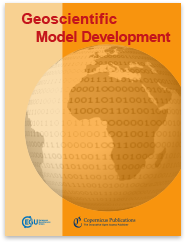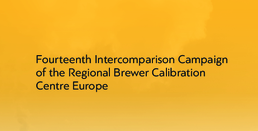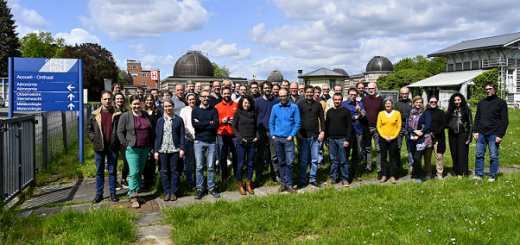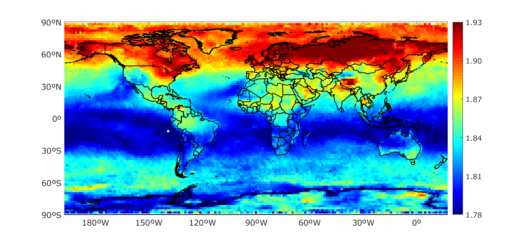Development of CarbonTracker Europe-CH4 – Part 2: global methane emission estimates and their evaluation for 2000-2012 (New study published in Geoscientific Model Development Discussions)

A group of scientists working mainly in Finish and Dutch institutions (but also from Switzerland, USA, Spain, Australia, Malta, Italy, Germany and Japan) has published a study in the scientific review Geoscientific Model Development Discussions. This scientific paper presents the evaluation of the model CarbonTracker Europe-CH4 and the results of global methane flux inversions performed with that model. A researcher from Izaña Atmospheric Research Center has participated in this study contributing to the evaluation, flux inversion, interpretation of the results, and writing of the article (not in the development of the model).
Because this scientific paper is very technical, firstly we present here a very brief introduction that tries to provide the reader some superficial understanding about this topic. An atmospheric transport model consists in a numerical (mathematical) model that given an initial 3D-spatial distribution of concentration of a given trace gas (e.g., methane) in the atmosphere, computes the time evolution of the concentration field of this trace gas in the atmosphere solving a set partial differential equations. These equations take into account that the trace gas is transported by the wind field, but also dispersed due to turbulence and convection (of two types: thermal convection within the Planetary Boundary Layer and deep convection that involves the full troposphere depth). There are also surface (oceanic and land) sources and sinks of the trace gas to be taken into account by the model, as well as volumetric sinks within the atmosphere (the main methane sinks are volumetric: chemical reactions with OH, Cl, and O(1D)).
The surface sources and sinks (for methane, the surface sinks –consumption by methanotrophic bacteria in soils- represent a small fraction, around 3%, of the total sinks) are known with high uncertainty (emission inventories, biosphere models, ecosystem trace gas flux measurements…). Using a transport model and atmospheric measurements of trace gas concentration in many stations, the surface sources and sinks can be known better performing an “Inversion”. The procedure is as follows: 1) the a priori surface fluxes are used in a forward run of the transport model; 2) the simulated trace gas concentrations obtained for each time step are compared with the concentrations really measured; 3) from these differences in concentration, the improvements that need to be applied to the surface fluxes to minimize those differences are deduced; and therefore, a more accurate a posteriori value for the surface fluxes is obtained.

Figure 1. Decomposition of the Earth surface in regions used by the model and locations of sites with observations assimilated in the inversions (“Discrete”: weekly flask samples analysed in a central lab; “Continuous”: instrument measuring continuously at the station).

Figure 2. Land-ecosystem map used in the regional definition in the optimisation.
Three different configurations are used to assess the sensitivity of the CH4 flux estimates to (a) the number of unknown flux scaling factors to be optimized which in turn depends on the choice of underlying land-ecosystem map, and (b) on the parametrization of vertical mixing in the atmospheric transport model TM5. The posterior emission estimates were evaluated by comparing simulations to surface in-situ observation sites, to profile observations made by aircraft, and to dry air total column-averaged mole fraction observations. The posterior estimated Global methane emissions for 2000-2012 are 516±51 Tg CH4 yr-1, and emission estimates during 2007-2012 are 18 Tg CH4 yr-1 greater than those from 2001-2006, mainly driven by an increase in emissions from the south America temperate region, the Asia temperate region and Asia tropics.
The posterior estimates for the northern latitude regions show significant sensitivity to the choice of convection scheme in TM5. The Gregory et al. (2000) mixing scheme with faster inter-hemispheric exchange leads to higher estimated CH4 emissions at northern latitudes, and lower emissions in southern latitudes, compared to the estimates using Tiedtke (1989) convection scheme. The evaluation with non assimilated observations showed that posterior mole fractions were better matched with the observations when Gregory et al. (2000) convection scheme was used.
More information about this study is available in the published scientific article in discussion phase:
Tsuruta, A., Aalto, T., Backman, L., Hakkarainen, J., van der Laan-Luijkx, I. T., krol, M. C., Spahni, R., Houweling, S., Laine, M., Dlugokencky, E., Gomez-Pelaez, A. J., van der Schoot, M., Langenfelds, R., Ellul, R., Arduini, J., Apadula, F., Gerbig, C., Feist, D. G., Kivi, R., Yoshida, Y., and Peters, W.: Development of CarbonTracker Europe-CH4 – Part 2: global methane emission estimates and their evaluation for 2000–2012, Geosci. Model Dev. Discuss., doi:10.5194/gmd-2016-182, in review, 2016.







